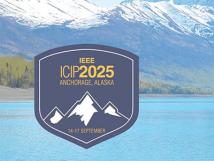
IEEE ICIP 2025 - The International Conference on Image Processing (ICIP), sponsored by the IEEE Signal Processing Society, is the premier forum for the presentation of technological advances and research results in the fields of theoretical, experimental, and applied image and video processing. ICIP has been held annually since 1994, brings together leading engineers and scientists in image and video processing from around the world. Visit the website.

- Read more about Supplementary for ICIP rebuttal
- Log in to post comments
This paper presents FaceLiVT, a lightweight yet powerful face recognition model that combines a hybrid CNN-Transformer architecture with an innovative and lightweight Multi-Head Linear Attention (MHLA) mechanism. By incorporating MHLA alongside a reparameterized token mixer, FaceLiVT effectively reduces computational complexity while preserving high accuracy. Extensive evaluations on challenging benchmarks—including LFW, CFP-FP, AgeDB-30, IJB-B, and IJB-C—highlight its superior performance compared to state-of-the-art lightweight models.
- Categories:
 48 Views
48 Views
- Read more about Shuffle PatchMix Augmentation with Confidence-Margin Weighted Pseudo-Labels for Enhanced Source-Free Domain Adaptation
- Log in to post comments
This work investigates Source-Free Domain Adaptation (SFDA), where a model adapts to a target domain without access to source data. A new augmentation technique, Shuffle PatchMix (SPM), and a novel reweighting strategy are introduced to enhance performance. SPM shuffles and blends image patches to generate diverse and challenging augmentations, while the reweighting strategy prioritizes reliable pseudo-labels to mitigate label noise. These techniques are particularly effective on smaller datasets like PACS, where overfitting and pseudo-label noise pose greater risks.
- Categories:
 144 Views
144 Views
- Read more about TASE 2025 supp
- Log in to post comments
Supp ro TASE 2025 submission
- Categories:
 50 Views
50 Views
- Read more about Supplementary Materials of FaceLiVT: Face Recognition using Linear Vision Transformer with Structural Reparameterization
- Log in to post comments
This paper presents FaceLiVT, a lightweight yet powerful face recognition model that combines a hybrid CNN- Transformer architecture with an innovative and lightweight Multi-Head Linear Attention (MHLA) mechanism. By incorporating MHLA alongside a reparameterized token mixer, FaceLiVT effectively reduces computational complexity while preserving high accuracy. Extensive evaluations on challenging benchmarks—including LFW, CFP-FP, AgeDB-30, IJB-B, and IJB-C—highlight its superior performance compared to state-of-the-art lightweight models.
- Categories:
 57 Views
57 Views
Abstract
- Categories:
 94 Views
94 Views
- Read more about Supplementary Material
- 1 comment
- Log in to post comments
In nighttime conditions, high noise levels and bright Illumination sources degrade image quality, making low-light image enhancement challenging. Thermal images provide complementary information, offering richer textures and structural details. We propose RT-X Net, a cross-attention network that fuses RGB and thermal images for nighttime image enhancement. We leverage self-attention networks for feature extraction and a cross-attention mechanism for fusion to effectively integrate information from both modalities.
- Categories:
 38 Views
38 Views
- Read more about SUPPLEMENTARY MATERIALS FOR EVENT DENOISING BASED ON ITERATIVE TREE-STRUCTURED INFORMATION AGGREGATIO
- Log in to post comments
SUPPLEMENTARY MATERIALS FOR EVENT DENOISING BASED ON ITERATIVE
TREE-STRUCTURED INFORMATION AGGREGATIO
- Categories:
 79 Views
79 Views
- Read more about Supplement - CONTEXTLOSS: CONTEXT INFORMATION FOR TOPOLOGY-PRESERVING SEGMENTATION
- Log in to post comments
Supplement for the research paper CONTEXTLOSS: CONTEXT INFORMATION FOR TOPOLOGY-PRESERVING SEGMENTATION
- Categories:
 99 Views
99 Views
- Read more about Cross-Domain Video Object Detection via Augmented-Shot FineTuning-0
- Log in to post comments
This document contains supplementary material for the ICIP PAPER.
- Categories:
 67 Views
67 Views
- Read more about CROSS-DOMAIN VIDEO OBJECT DETECTION VIA AUGMENTED-SHOT FINETUNING
- Log in to post comments
This document contains supplementary material for the ICIP PAPER.
ICIP_SUPPm.pdf
- Categories:
 39 Views
39 Views